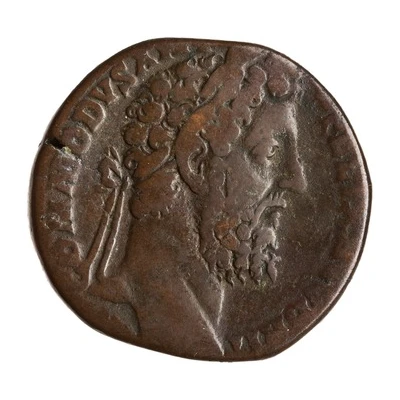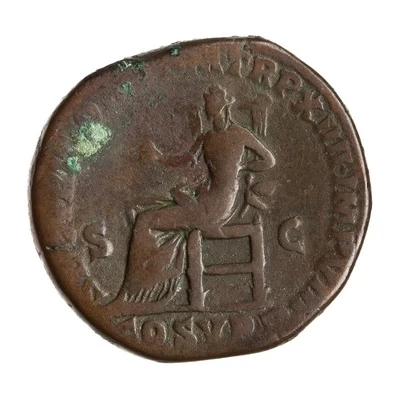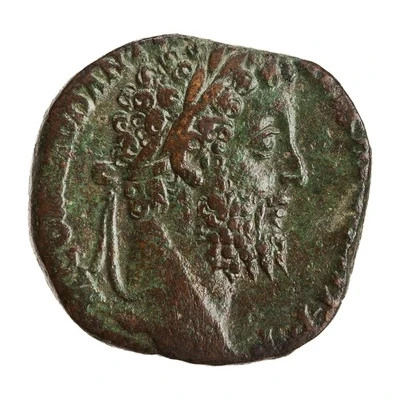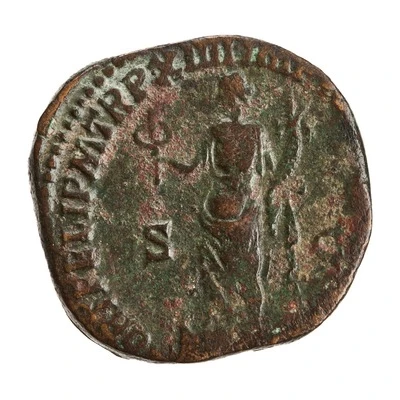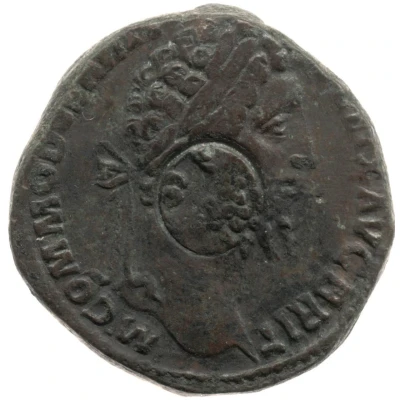
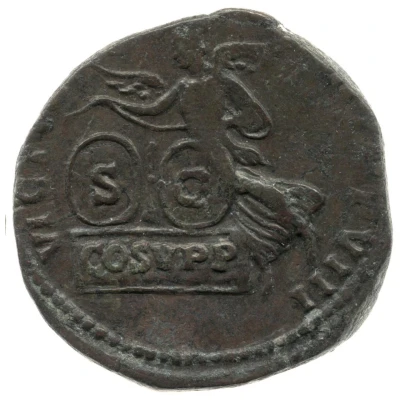

© Trustees of the British Museum
Sestertius - Commodus VICT FELI P M TR P XIIII IMP VIII COS V P P S C; Victory
| Bronze | 27.9 g | - |
| Issuer | Rome › Roman Empire (27 BC - 395 AD) |
|---|---|
| Emperor | Commodus (Lucius Aurelius Commodus) (177-192) |
| Type | Standard circulation coin |
| Years | 188-189 |
| Value | 1 Sestertius = ¼ Denarius |
| Currency | Denarius, Reform of Augustus (27 BC – AD 215) |
| Composition | Bronze |
| Weight | 27.9 g |
| Shape | Round (irregular) |
| Technique | Hammered |
| Demonetized | Yes |
| Updated | 2024-10-06 |
| Numista | N#265915 |
|---|---|
| Rarity index | 100% |
Reverse
Victory, towered, winged, draped, flying left, holding wreath in extended hands; to left, two shields inscribed S C on base inscribed COS V P P.
Script: Latin
Lettering: VICT FELI P M TR P XIIII IMP VIII COS V P P S C
Translation:
Victoria Felix. Pontifex Maximus, Tribunicia Potestate Quarta Decima, Imperator Octavum, Consul Quintum, Pater Patriae. Senatus Consultum.
Fortunate victory. High priest, holder of tribunician power for the 14th time, supreme commander (Imperator) for the eighth time, consul for the fifth time, father of the nation. Decree of the senate.
Comment
Example of this type:Trustees of the British Museum
Source:
Online Coins of the Roman Empire (OCRE)
Interesting fact
One interesting fact about this coin is that it features an image of the Roman goddess Victory (Victoria) on the reverse side, which was a common motif on Roman coins during the reign of Commodus. The image of Victory was meant to symbolize the Roman Empire's military prowess and its ability to conquer and dominate other nations. The coin's design also includes the inscription "VICT FELI P M TR P XIIII IMP VIII COS V P P S C," which stands for "Victory, happy and auspicious, triumphant, fourteenth time consul, eight times imperator, cosmos, father of the fatherland." This inscription highlights Commodus's various titles and accomplishments, including his military victories and his role as the father of the Roman state. Overall, this coin provides a glimpse into the propaganda and ideology of the Roman Empire during the late 2nd century AD.
